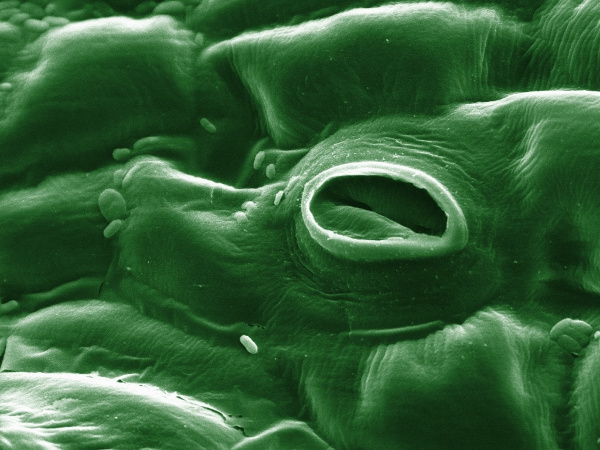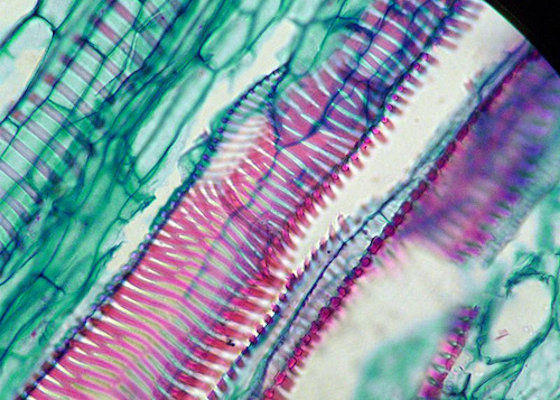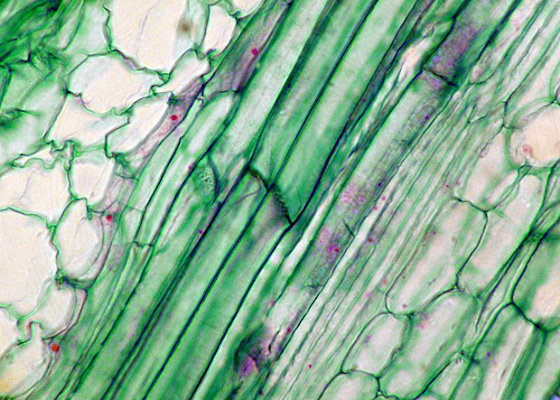Nutrient Cycling in Trees
For an optimal tree growth, including wood production and reproduction, plants require not only CO2 from the atmosphere and water from the soil, but also a set of nutrients. Especially N, P, S and further micro nutrients like K+ and Ca2+, Mg2+ are required. Nutrients can be taken up from the soil via the roots and from the atmosphere via the stomata of leaves (Figure 1). In the soil nutrients are dissolved in the soil water and are present as inorganic and organic ions. In the atmosphere air pollutants like SO2, NOx and NH4+ can also function as a nutrient.
Plants take up the nutrients by the roots (Figure 2) and distribute them within the plants by short distance transport from cell to cell via plasmodesmata (Figure 3) or by long distance transport partially before and subsequent to assimilation processes. Long distance transport is carried out in vasculature tissues. Nutrients and water transport from the roots up to the shoot takes place mainly in the xylem that consist of dead cells. Transport of photoassimilates into the so cooled ‘sink’ tissues is achieved mainly by phloem transport that consist of living cells. Both nutrients and assimilates can be exchanged between xylem and phloem. For trees, storage and mobilisation processes in living cells of the stem are of essential importance for seasonal growth and long live.


